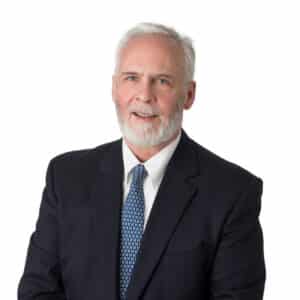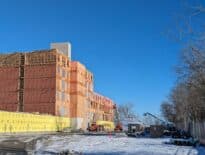Richard P. Kelly
SVP and Senior Commercial Risk Officer, MountainOne Bank
Years experience: 40 years
Richard “Dick” Kelly has been in the banking industry for 40 years, and is putting that experience to the test as he steps into his latest role – at a time when banks everywhere are keeping a watchful eye on their commercial borrowers. He joined North Adams-based MountainOne Bank in 2020 as a senior vice president to lead the bank’s commercial lending team in the Berkshires. As an experienced commercial loan officer, Kelly stepped up to the bank’s newly created position as a senior commercial risk officer, managing the bank’s asset quality and portfolio and overseeing its loan approval process both in the Berkshires and the Boston area. He also works directly with commercial lenders to provide them with guidance, perspective, and management of new and existing business loan relationships.
Q: What does a commercial risk officer do?
A: I as a commercial risk officer oversee the credit department and have significant interaction with the lenders. Ideally, what I am looking at is protecting the bank from undue risks and making sure that things are in the order on the credit administration side of things.
Banking is a highly regulated industry. There are many standards that we have to make sure that we adhere to and a large part of my role is involved with making sure that we are doing the right things in commercial lending. Each commercial loan is unique unto itself, and there are various risks. We look at these to make sure that we are as well-protected as we can be.
Typically, a commercial lender would meet with a borrower and determine what the request is, and then request the appropriate financial information so that we, the commercial risk officers, can do the initial review of whether or not this makes sense and whether what the customer is requesting is in to what normal commercial underwriting standards are.
Then we do the actual underwriting, which consists of looking at their cash flow, their capacity, meaning liquidity, what the collateral is, what kind of conditions they may be operating in in terms of the economic environment, but also on a localized basis, how much competition is there, things like that.
Q: In this newly created position, how will you help the bank in managing credit risks and building defenses?
A: We do have a fair amount of CRE lending in the Boston area as well as South Shore, geared towards housing, whether it be apartment complexes or development of condos. We do not have a great deal of office exposure. We also do C&I lending, which may entail real estate lending to operating companies or their owners.
In terms of managing risk, the initial analysis that we do is to make sure that if something goes awry with a loan, there are other avenues for a bank to get repaid. Once a loan is made, there will be ongoing monitoring on our side and depending on the type of loan – some might need more frequent monitoring than other loans.
We use a six-to-10-point rating system for an overall assessment of ‘Is this loan OK?’, ‘is it showing signs of weakness?’, ‘is it already showing signs of weakness?’ A three-rated credit is a fine credit. A four-rated credit may be a fine credit, but it might be giving that risk rating because of the development of the real estate. Until that is actually completed, the cash flow doesn’t exist yet. But we as bankers believe it will achieve what the borrower expects to happen and the cash flow will eventually be there.
Q: How important it is to have a risk officer for commercial loans at a time like this?
A: It is very important. Throughout the last three decades, there have been various macroeconomic issues that affected individual banks’ overall health, and if you look back at the bank failures earlier in 2023, those were somewhat different than what has been experienced historically.
There are different individuals in the bank that oversee different parts. My role is related to the credit side of things, and in my perspective, we have a different world now than what we had 15 years ago. Everyone has that ability to know at a moment’s notice what they think is going on in the world because it’s all on their phone. And that’s another risk. As you saw from the bank failures last year, liquidity can be wiped out in almost 24 hours. So, it’s very important to have someone who makes sure that the bank and the customers are safe.
Q: How do you view the commercial real estate loan default risks of today?
A: It depends on the commercial real estate segment. For instance, in [commercial] residential lending, you have underwritten well at the outset. I don’t think the risk of loss is really not much greater than what would be a few years ago because we have a housing shortage. We also have borrowers who are experienced and have been through some downturns or interest rate hikes or whatever the case may be. They know how to manage things.
On the office side of things, that’s got a ways to go before there’s really any stabilization. So, is that risk higher? Sure. If you look at what happened in San Francisco where there were bank losses on commercial properties, that is a microcosm of what could happen in the whole U.S.
Now office spaces are being turned into residential units. Where does that all end up? I don’t think anybody really can predict. Some people think the work-at-home or the hybrid work-at-home environment will remain. Maybe it will, maybe it won’t.
In a certain degree, [bank losses on commercial properties] are happening in Boston because with higher interest rates and capitalization rates, values get driven down. But is it rampant in Boston? I don’t know, I can’t answer that. But certainly, it can happen anywhere.
Kelly’s Five Favorite Movies
- The “Star Wars” series
- “White Christmas”
- “Holiday Inn”
- “Guess Who’s Coming to Dinner”
- “Hopscotch”






